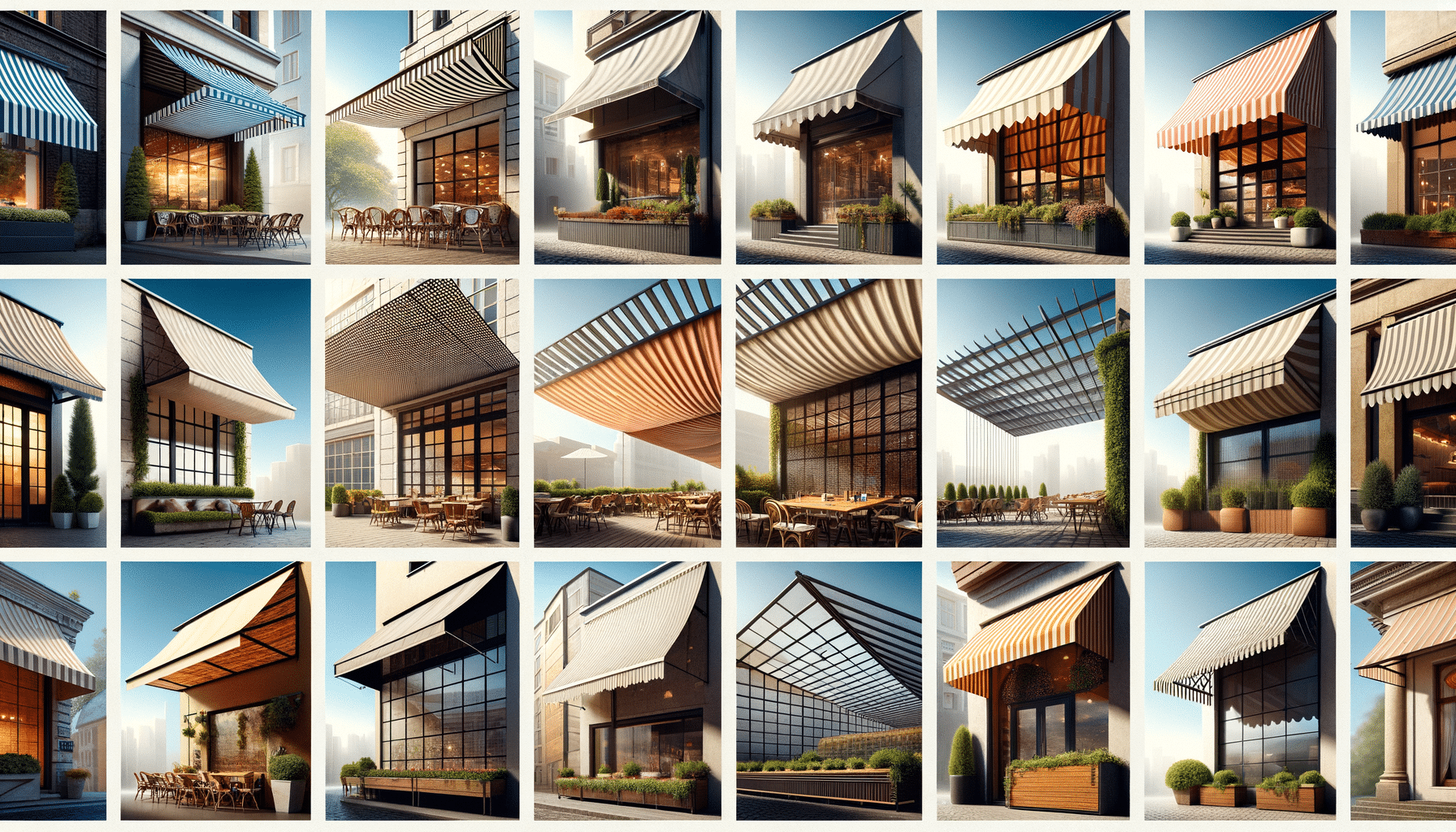
Unfolding the Significance and Diverse Designs of Awnings and Overhangs
The Functional Impact of Awnings and Overhangs
Awnings and overhangs play a crucial role in enhancing the functionality of buildings. These architectural elements provide shelter from various weather conditions, such as rain, snow, and excessive sunlight, thus contributing to the comfort of those using the space. By offering shade, they help in reducing the heat gain inside buildings, which can lead to significant energy savings. This reduction in energy consumption is particularly beneficial in warmer climates, where cooling costs can be substantial.
Moreover, awnings and overhangs extend the usable space of a building. For example, a well-placed awning can transform an outdoor area into a comfortable, shaded retreat, perfect for dining or relaxation. This extension of space is not only practical but also enhances the aesthetic appeal of the property.
In commercial settings, awnings serve as an effective branding tool. Businesses often use them to display their names and logos, turning a functional element into a marketing opportunity. The visibility provided by awnings can attract foot traffic and enhance the business’s street presence.
Overall, the functional impact of awnings and overhangs is multifaceted, offering benefits that go beyond mere protection from the elements. They enhance energy efficiency, expand usable space, and can even contribute to a business’s branding efforts.
Design Variations and Aesthetic Appeal
The design of awnings and overhangs can significantly influence the appearance of a building. With a wide range of materials, colors, and styles available, these elements offer ample opportunities for customization. Traditional canvas awnings, for instance, evoke a classic look and are available in various patterns and colors, allowing for a personalized touch.
On the other hand, modern designs often incorporate materials such as metal or glass, which provide a sleek and contemporary feel. These materials are not only durable but also offer a minimalist aesthetic that complements modern architecture. The choice of design can dramatically alter the perception of a building, making it look more inviting or sophisticated, depending on the desired effect.
Furthermore, the shape and style of awnings and overhangs can vary widely. From flat and straight to dome-shaped or retractable, each design offers different benefits. Retractable awnings, for example, provide flexibility as they can be extended or retracted based on weather conditions, offering control over sunlight and shade.
Incorporating awnings and overhangs into a building’s design requires careful consideration of the architectural style and the intended use of the space. When executed well, they can enhance the building’s overall aesthetic appeal, adding character and charm.
Material Choices and Durability
The choice of materials for awnings and overhangs is critical, as it affects both durability and appearance. Common materials include fabric, metal, wood, and polycarbonate, each offering distinct advantages and considerations.
Fabric awnings, often made from materials like acrylic or polyester, are popular due to their versatility in colors and patterns. They are lightweight and relatively easy to install, but they may require more frequent maintenance to prevent fading and wear.
Metal awnings, typically made from aluminum or steel, are known for their strength and durability. They can withstand harsh weather conditions and require less maintenance compared to fabric options. However, they may not offer the same level of aesthetic flexibility.
Wooden overhangs provide a natural look and can blend seamlessly with traditional architectural styles. While they offer a warm and inviting appearance, they require regular maintenance to protect against rot and insect damage.
Polycarbonate is a modern material choice that offers durability and transparency, allowing light to pass through while providing protection from UV rays. This material is ideal for those looking to maintain natural light while benefiting from the protective qualities of an overhang.
Ultimately, the choice of material should align with the building’s aesthetic and functional needs, ensuring longevity and satisfaction.
Environmental Considerations and Sustainability
Incorporating awnings and overhangs into building design can contribute to environmental sustainability. By reducing the need for artificial cooling, these elements help lower energy consumption, which is beneficial for both the environment and the building owner’s budget.
Additionally, the materials used for awnings and overhangs can have environmental implications. Choosing sustainable materials, such as recycled aluminum or sustainably sourced wood, can minimize the environmental footprint. Fabric options made from recycled or eco-friendly materials are also available, offering a greener alternative to traditional fabrics.
Moreover, the strategic placement of awnings and overhangs can enhance natural ventilation and lighting, further reducing reliance on artificial systems. By allowing for controlled sunlight exposure, they can help maintain comfortable indoor temperatures without excessive energy use.
In the context of green building certifications, such as LEED, the use of awnings and overhangs can contribute to achieving sustainability goals. These elements can be part of a broader strategy to enhance a building’s environmental performance, making them a valuable consideration for eco-conscious architects and builders.
Cost Considerations and Investment Value
The cost of installing awnings and overhangs can vary significantly based on materials, design complexity, and size. While the initial investment may seem substantial, the long-term benefits often justify the expense.
Energy savings are a primary financial benefit, as awnings and overhangs can reduce cooling costs by providing shade and reducing heat gain. Over time, these savings can offset the initial installation costs, making them a cost-effective solution for energy efficiency.
Additionally, awnings and overhangs can increase the value of a property by enhancing its aesthetic appeal and functionality. In real estate markets, properties with attractive and functional outdoor spaces often command higher prices, offering a return on investment for homeowners and developers.
When considering the cost, it is essential to weigh the upfront expenses against the potential savings and increased property value. By selecting durable materials and designs that complement the building, owners can ensure that their investment provides lasting value.

